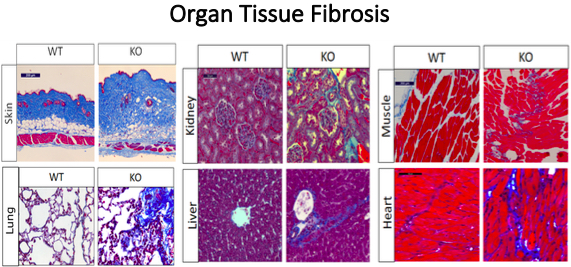Model of Organ Fibrosis
Mouse Model for the deletion of the Spag17 gene after Cre recombination
Novel Spag17 Flox Mouse
Spag17 is a complex gene associated with cilia and microtubule cytoskeleton. Loss of Spag17 leads to developmental defects, primary cilia dyskinesia, accelerated aging, male infertility, and multi-organ fibrosis. Researchers at Virginia Commonwealth University (VCU) have developed a novel mouse model with the potential for the deletion of the Spag17 gene once crossed with a Cre mouse.
The technology
The novel flox mouse model that was created has the potential to generate a knockout for Spag17 once crossed with a Cre mouse. The generated mouse model presents a significant avenue to study primary cilia dyskinesia, development, skeletal dysplasia, primary cilia disfunction, aging, infertility, multi-organ fibrosis and neuronal cells differentiation after Cre recombination.

Figure 1. Multi-organ fibrosis is one of the phenotypes developed after conditional deletion of Spag17. Shown above are representative histological sections from skin, lung, kidney, liver, muscle and heart tissue stained by Masson’s Trichrome stain as a fibrotic marker. Increased collagen deposition (blue) is observed in Spag17 knockout mice compared to wild-type controls.
